| ILFORD Companies acquired during c1920s |
|
|
|
|
|
|
||||
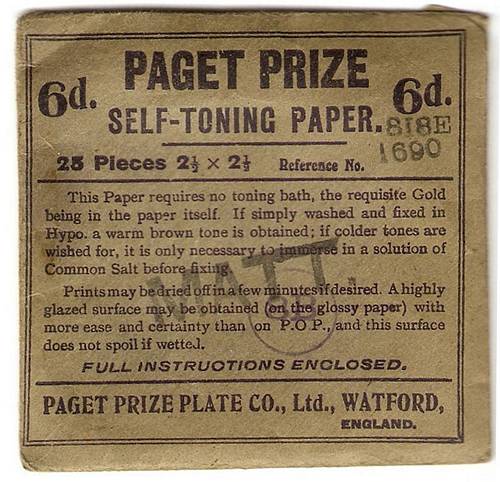 |
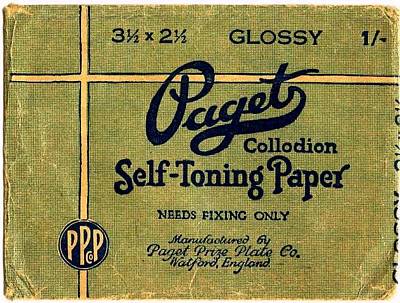 (Needs Fixing Only). Price 1/- (5p) - worth about £10 in 2009 using average earnings as the comparative index, or £2.50 on an inflationary scale. |
|||
|
|
|
|||
|
|
||||
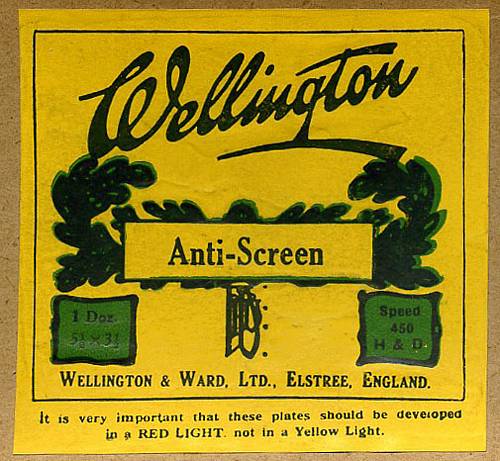 |
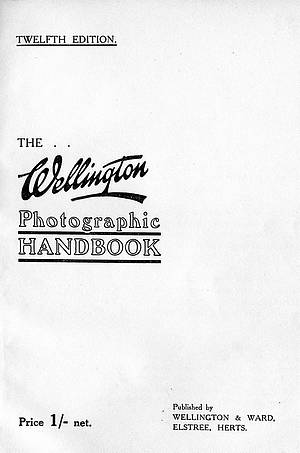 |
|||
|
The 12th Edition of the Wellington
Photographic Handbook, published in 1922 (see frontispiece, above
right). The Preface states: "Never a day passes without our receiving gratifying testimony to the value of our goods, and it will always be our endeavour to maintain the fine reputation which the WELLINGTON Products have gained for themselves all over the world". Paul Godfrey has made available a scan of the 15th edition of "The Wellington Photographic Handbook", which must date to the latter 1920s, as WELLINGTON & WARD, LTD..ELSTREE, HERTS had been assimilated into Ilford, Ltd by 1930. |
||||
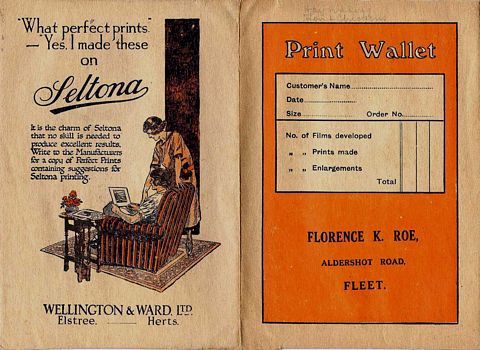 |
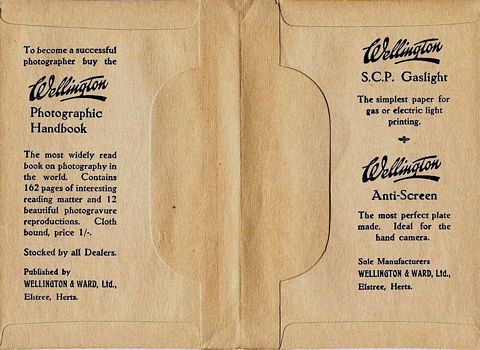 |
|||
|
The print envelope above is by Wellington & Ward and probably dates from the 1920s. It advertises daylight Seltona printing paper which 'The Wellington Photographic Handbook' (see above) describes as "a Collodion self toning paper, only needing fixing in hypo for the production of beautiful sepia tones. No medium is capable of producing prints of better quality or more artistic colour, yet it is the simplest paper to work". S.C.P. Gaslight paper was a 'Slow Contact Paper' that could be exposed via the light of a gaslight or a low wattage electric bulb. Provided the paper was protected from the direct rays of such lights, it could be handled and subsequently developed and fixed in the same room as the one where the contact printing exposure took place, making possible the use of a room used for other purposes, with no need of a temporary darkroom. Anti-Screen plates and roll films were 'isochromatic' light sensitive emulsions; seemingly a description of film with sufficient sensitivity to yellow and green light that there was no need for a speed depleting yellow filter to be fitted to the lens to control its otherwise excessive sensitivity to blue light. My thanks to Brian Rees for the above print envelope. |
||||
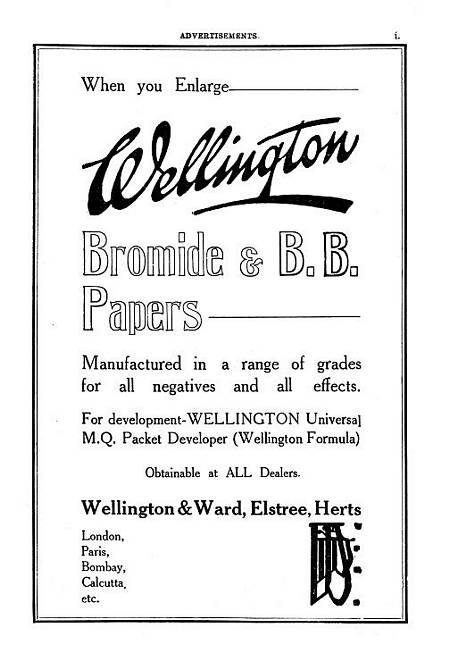 |
The scan alongside came from Ian Grant who tells me his BJPA for 1928 seems probably one of the last with all the indenpendent companies like Illingworth's, Wellington & Ward etc. Also has A.P.M. The advertisement alongside was scanned by Ian from a book on enlarging. "There's no date in the book but it's the 3rd Edition and 7 Editions were printed between 1910 & 1924". The cover is shown below. 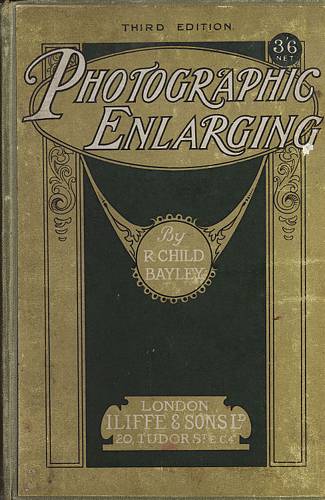 |
|||
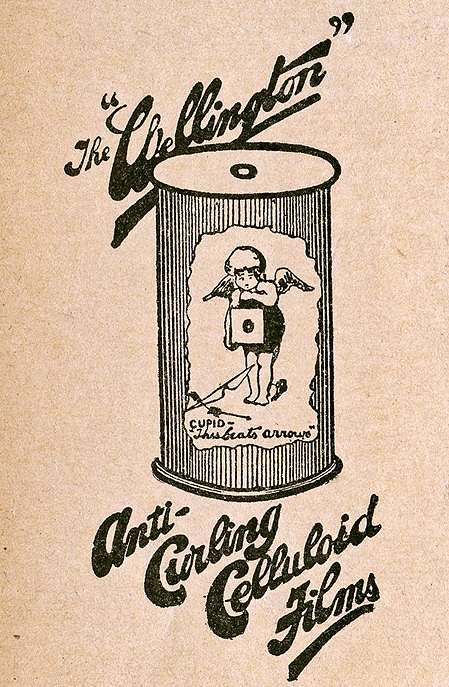 |
The Wellington & Ward image left , plus the two below, were sent to me by "David". Thanks for the scans. David says "The Cupid came from the back of one of the paper packs". For a pdf leaflet giving directions for use of Wellington Bromide Papers (Platino, Ordinary, Carbon, Cream Crayon, Chamois and Enammo) click here. Courtesy of Brian Rees. |
|||
 |
||||
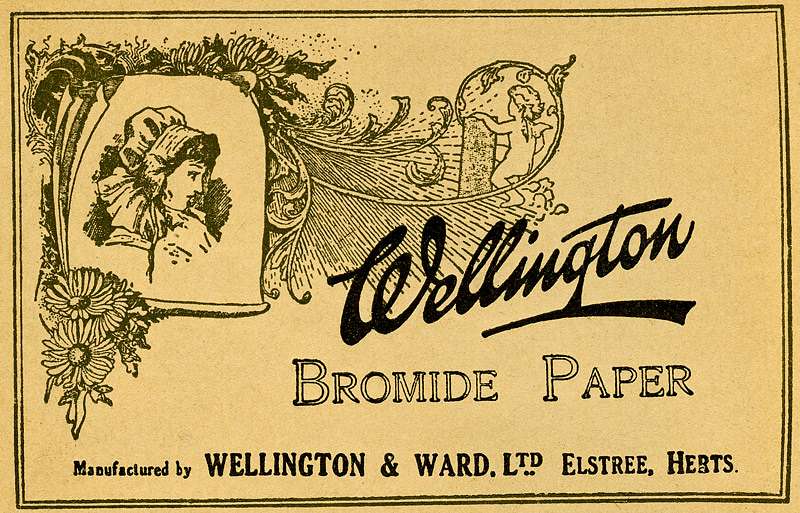 |
||||
|
|
|
|||
|
|
||||
 |
||||
 |
||||

|
||||
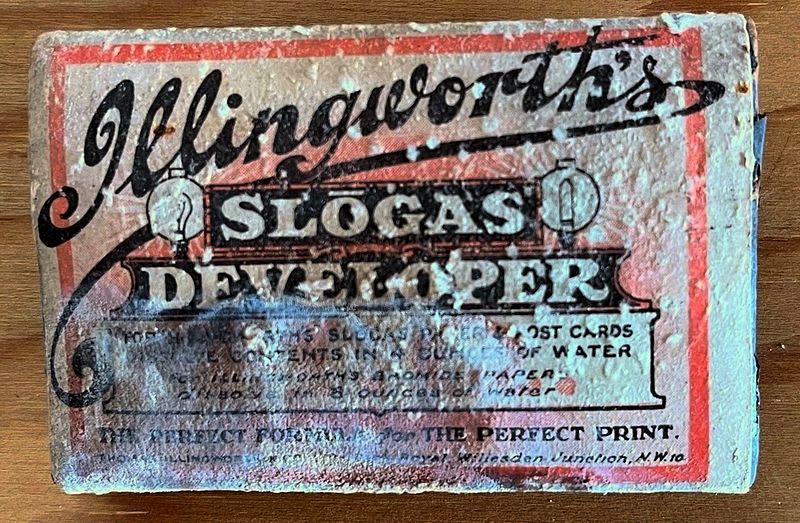
|
||||
 |
||||
|
Notice Ilford's Selo Soldier brand mark, showing the formal connection between Illingworth and Ilford Ltd |
||||
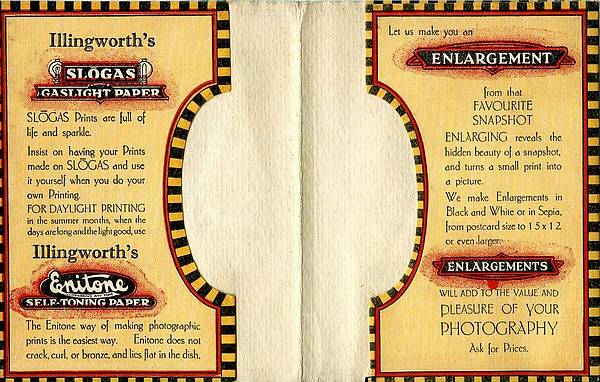 |
||||
|
|
|
|||
|
|
||||
| The next four images are from Steve Jones. Imperial became part of Ilford from around 1919, so with the absence of any mention of Ilford on the packaging, it seems likely this box dates pre-1920. | ||||
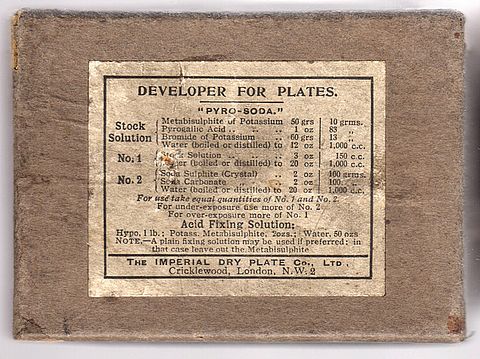 |
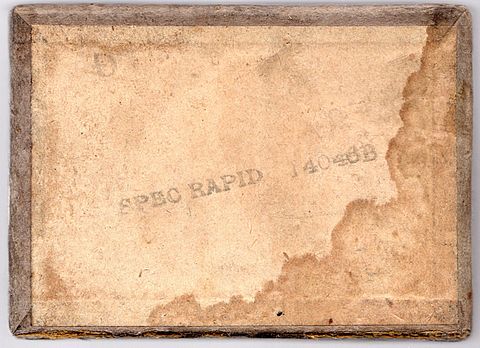 |
|||
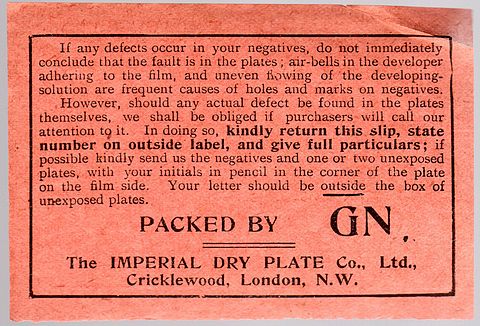 |
 |
|||
| Below are two boxes of 'Special Rapid' plates from The Imperial Dry Plate Co. Ltd. The boxes are owned by Simon Tainton. They were purchased (2022) from Simon's local antiques (house clearance) store for £5. There are 29 plates in total, "mostly holiday snaps and a few portraits". One of the images is shown below and contains a magazine that dates the picture to 1921. | ||||
.jpg) |
.jpg) |
|||
|
One of the images (below) shows a child on a sandy beach, sitting on a copy of The Strand Magazine. Simon has discovered that the date of that issue (see opposite) was April 1921. It isn't possible to be sure these images are on the actual Imperial Plates that were in the above boxes, but the date of 1921 is reasonable. Imperial Dry Plate joined with Ilford around 1918, but products would have continued being sold in earlier packaging for some time while the combined organisations were rationalised. 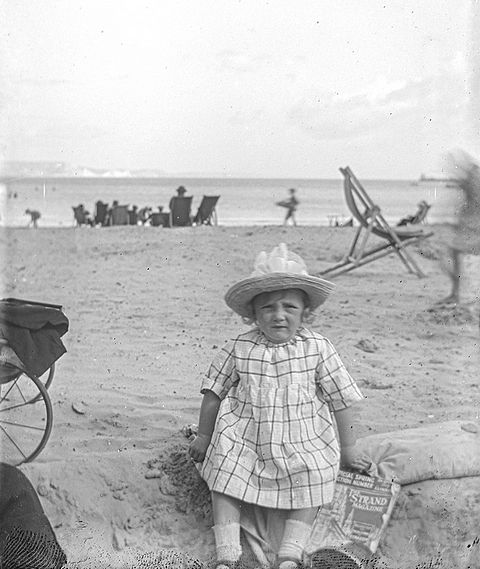 |
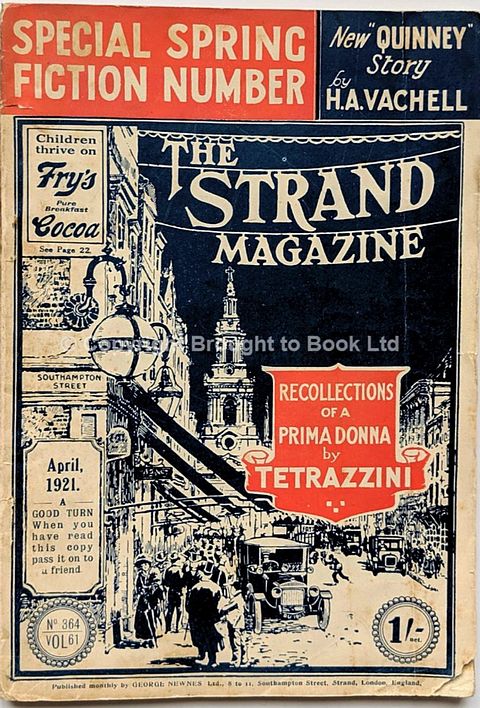 |
|||
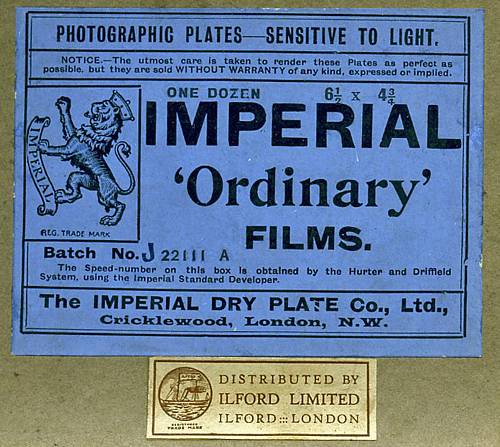 |
||||
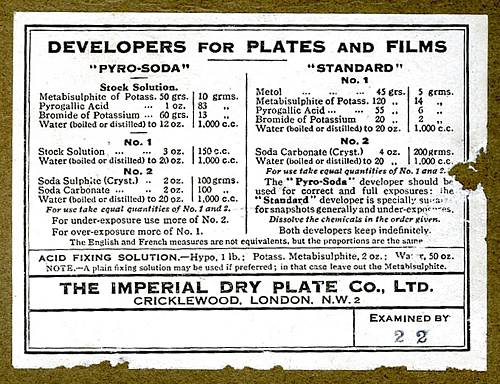 |
||||
|
|
||||
 |
||||
|
||||
|
|
||||